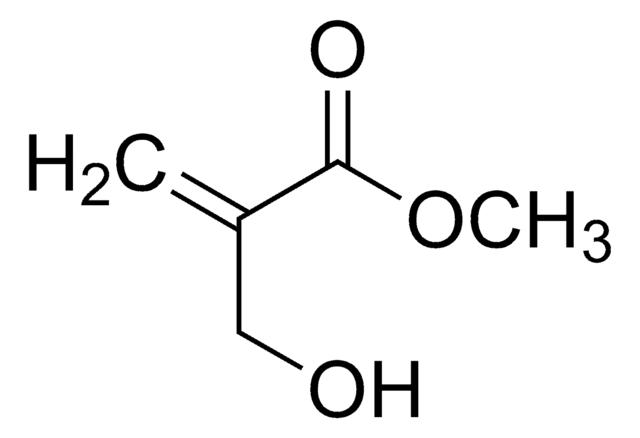292818
2-Hydroxyethyl acrylate
96%, contains 200-650 ppm monomethyl ether hydroquinone as inhibitor
동의어(들):
Ethylene glycol monoacrylate
About This Item
추천 제품
vapor density
>1 (vs air)
vapor pressure
<0.1 mmHg ( 20 °C)
분석
96%
형태
solid
포함
200-650 ppm monomethyl ether hydroquinone as inhibitor
refractive index
n20/D 1.45 (lit.)
bp
90-92 °C/12 mmHg (lit.)
density
1.011 g/mL at 25 °C (lit.)
저장 온도
2-8°C
SMILES string
OCCOC(=O)C=C
InChI
1S/C5H8O3/c1-2-5(7)8-4-3-6/h2,6H,1,3-4H2
InChI key
OMIGHNLMNHATMP-UHFFFAOYSA-N
유사한 제품을 찾으십니까? 방문 제품 비교 안내
일반 설명
애플리케이션
신호어
Danger
유해 및 위험 성명서
Hazard Classifications
Acute Tox. 3 Dermal - Acute Tox. 4 Oral - Aquatic Acute 1 - Aquatic Chronic 3 - Eye Dam. 1 - Skin Corr. 1B - Skin Sens. 1
Storage Class Code
6.1A - Combustible acute toxic Cat. 1 and 2 / very toxic hazardous materials
WGK
WGK 3
Flash Point (°F)
213.8 °F - closed cup
Flash Point (°C)
101 °C - closed cup
개인 보호 장비
Faceshields, Gloves, Goggles, type ABEK (EN14387) respirator filter
시험 성적서(COA)
제품의 로트/배치 번호를 입력하여 시험 성적서(COA)을 검색하십시오. 로트 및 배치 번호는 제품 라벨에 있는 ‘로트’ 또는 ‘배치’라는 용어 뒤에서 찾을 수 있습니다.
이미 열람한 고객
문서
Monomers for ophthalmic use aim for purity, reliability, and comfort, driving innovation for affordable contact lenses.
자사의 과학자팀은 생명 과학, 재료 과학, 화학 합성, 크로마토그래피, 분석 및 기타 많은 영역을 포함한 모든 과학 분야에 경험이 있습니다..
고객지원팀으로 연락바랍니다.

















